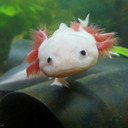Snakehead Care (Channa bleheri)
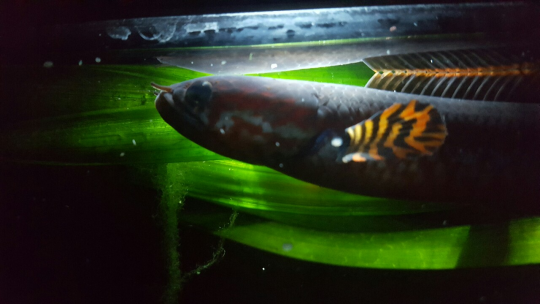
Due to popular request I’m going to do a care guide on Rainbow Snakehead based on my own research and experience. I will also give a quick rundown on other species. Note though if Snakehead are illegal where you are don’t try to obtain one. They’re also not easy fish to care for and do not fit most keepers wow factor after a while.
General Information:
Snakehead are described as perch like fish. Since though they’ve been studied more closely and have much closer structures and dna to that of labyrinth fish as well as fresh water eels.
These fish are naturally distributed from south-eastern Iran and eastern Afghanistan eastwards to China, northwards to Siberia and southwards to Java, and from the White Nile westwards to the Senegal and Chad river drainages and southwards to the Congo river drainage in Africa. Due to invasivness brought on by the food, medicine and pet trades are now found all over the world.
There are 34+ species of channa and parachanna (3) that are doccumented with more being recorded yearly. They often find their way into the pet and food trades shortly after discovery.
Oxygen tolerance:
This I’ve found is a big draw and misunderstanding for people in the pet trade. Like labyrinth fish snakeheads can breath atmosphere air as sub adults and adults. In fact they are obligatory air breathers that will drown without access to humid oxygen. Because of this though, many keepers will keep them in stagnate or dirty water figuring that’s what they have in the wild. This is false and though snakehead can tolerate poor condition for a long period and in the wild survive some very poor seasons, their health is at risk if kept long term like any other fish.
Tank:
Rainbow snake head require 20 gallons per animal 30″x12″ and at least an additional 12″ for each additional animal. The tank must be well planted with cave like structures and leaf cover. A canopy of some sort will reduce stress. A strong ventilated lid is necessary. Snakehead do not hesitate to jump and are strong enough to shift glass lids or get past rubber seals. A heater is not needed and I don’t recommend them unless your room gets freakishly cold. Rainbow snakehead are fine in the low 60′s in the winter. Filters are needed, I use sponge filters as do many others. They don’t like a lot of current and they’re able to be setup with no openings in the lid. You want a fine sand substrate or some people use peat. This is because of their digging and eating habits to prevent impaction.
Tankmates:
Very few options. I mean pretty much none. This will be up to you in the end but any tank mates must follow the following rules.
- Must be able to go between 60 and 77 degrees throughout the year
- Be a carnivore that is fine getting leftovers
- Grow 5-10″
- Be non-aggressive and non-territorial
- Be able to survive a good bite if they’re fought.
- Best if they have a night schedule
- Able to live comfortably in the same sized tank
- Have no defenses that involve barbs, or poison
Basically this leaves a few larger catfish, giant danio, and other rainbow snakehead. All other fish are either toxic, seen as food, or get too large and actually intimidate the snakehead. Best thing you can do is have a species tank. You can have males together, females, or mixed pairs. They’re perfectly fine alone too.
Food:
Feeding habits are odd and at times frustrating. Snakehead require a varied diet, but like snake don’t eat all the time… I offer mine mussel his absolute favorite, earthworms, bloodworms, like 5 different types of shrimp, a gel food made of fish, squid, and on occasion feeder insects. They pick favorites, they make a mess, they go on hunger strikes… Spring and summer they eat 3 times a week and in the winter might only eat once every week or two. Try to get something in them though.
They should not eat dry foods. These don’t digest well and they don’t really like it. Also don’t feed b!rd meat, feeder m!ce or mammal this will lead to malnutrition and illness.
Snakehead are lazy hunters, during the winter they casually eat stuff on the ground. In the warm months they ambush very fast and take their food to a cave to eat. They’re messy. Just leave it they’ll eventually clean it up.
Breeding:
Easy to do really. First you have to get a male and female pair. They’re hard to sex unless side by side and the differences are small. Female tend to be bigger and a bit bulkier. Males during the spring will have brighter colors. Basically once you have a pair that likes eachother just leave them alone in good conditions (Make sure they have enough territory). They embrace and seem to fight. The female may look a little rough after but they’re fine. These guys don’t bubble nest or mouth brood like most snakehead. Instead the good eggs simply float up to the surface. Both parents care for and raise the fry up until a little over an inch. Breeding can be dangerous though. Sudden changes or stress can make them turn on eachother. A well planted tank is an absolute must as well. Avoid large water changes or temperature shifts while breeding.
Wintering:
Rainbow Snakehead cannot have year round warm temperatures and need to have a cooling period. Some keepers just do that and reduce feeding. Others simulate full winter conditions. This involves adding more leaves to the water, letting the ph drop fairly low and letting the water level drop. The air becomes more humid during this. Come spring or once things warm up do daily water changes for a couple of weeks to simulate rainfall. You can continue a regular routine then. During the winter they may hide more, not accept food or interact. Just watch for signs of illness and encourage eating or add a vitamin supplement so that they remain healthy,
Other considerations:
Snakehead are scaleless fish that are as sensitive as knives or even amphibians. Keep this in mind when medicating and avoid fertilizers. If your snakehead does get out they can sort of walk so search a fair distance from the tank. They can survive out of the water for 3 days and have been known to go several km in that time. Put them back in the water. They may bite, it hurts an bit but don’t freak out. Lift your hand slowly out of the water, if they don’t let go gently pinch the sides of their mouth and pull. Don’t be rough, it won’t help. Don’t just pull them off either, the dragging teeth will hurt more.
Stats:
Size: 5-10″ It varies with 6 or 7 being avarage.
Tank size: 20 gallon long for 1 (+20 gallons and at least 1 square foot for each additional)
Ph: 6.0-7.5
GH: 5-19
Temp: 57-77′f (seasonal variation required)
Lifespan: 8-15 years
Country: India
Other common Snakehead:
Channa aurantimaculata (Golden Cobra)
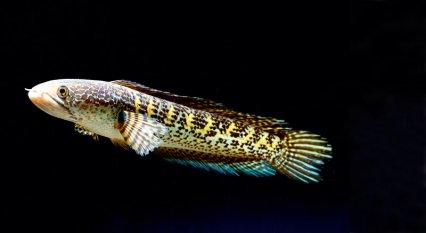
Size: 14-20″
Tank size: 120 gallon absolute minimum.
Ph: 6.0-7.5
GH: 5-20
Temp: 60-82′f (seasonal variation required)
Lifespan: 8-12 years
Country: India
They’re primarily insectivores and do best on a live feeder insect diet. Very aggressive, best kept alone and one to a tank unless breeding.
Red Snakehead (Channa micropeltes)
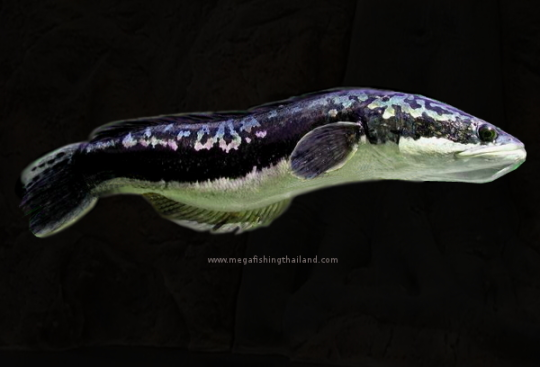
Size: 38-50″
Tank size: 300 gallons for the smallest specimens and as a grow out but really require 1000 to be housed comfortably
Ph: 6.0-7.5
GH: 8-12
Temp: 70-82′f (seasonal variation required)
Lifespan: 5-10 years
Country:
Malay
Need to be weened on a killed diet as soon as possible. They eat a lot. These guys will bite . Require massive strong tanks. Can break glass.
Dwarf snakehead (Channa gachua)
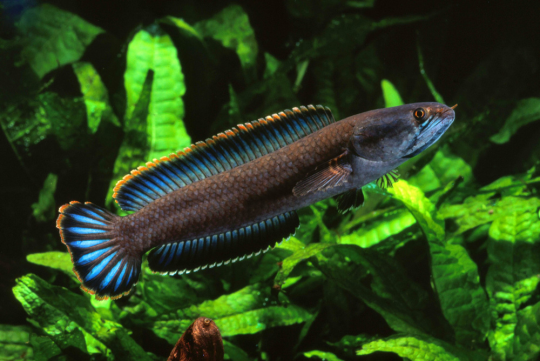
Size: 6-8″
Tank size: 20-30 gallons for the first first and 15 gallons for each additional.
Ph: 6.0-7.0
GH: 12-15
Temp: 71-78′f (seasonal variation required)
Lifespan: 8-12 years
Country:
Indonesia.
Probably one of the calmest varieties. They do fine in groups and can put up with some other tankmates well. Best beginner species.
